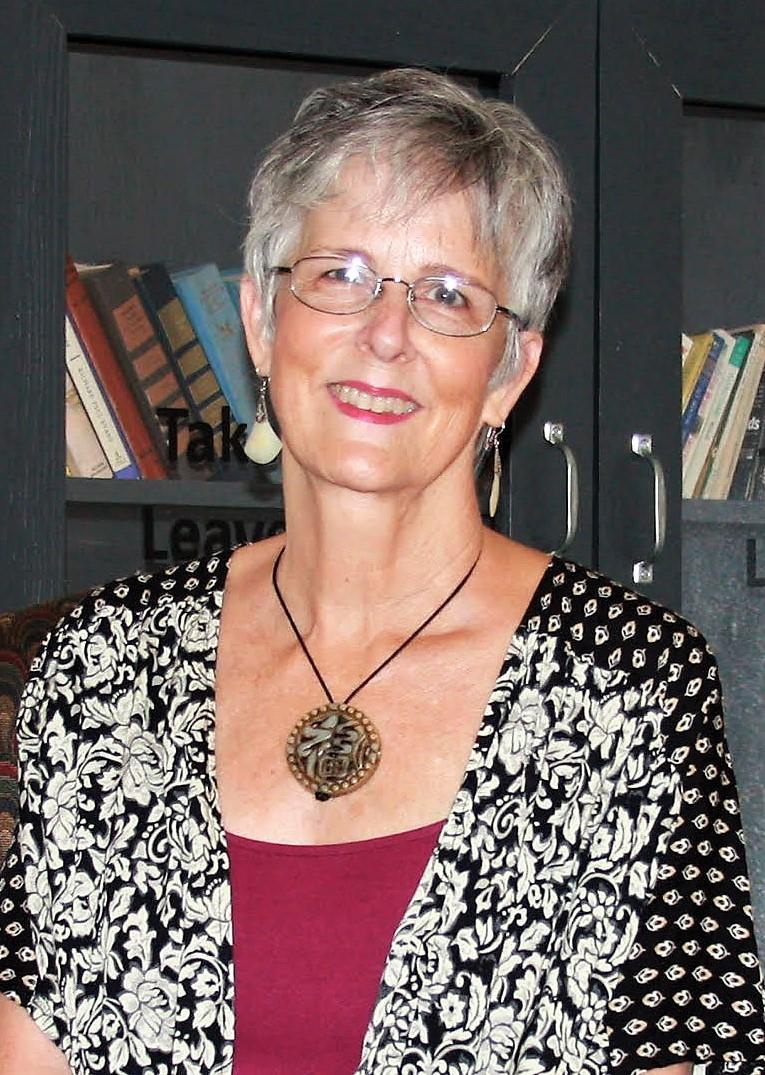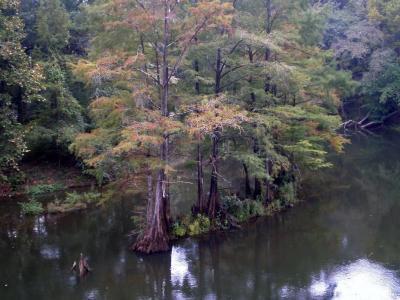
Crossing Lines: Reaching Across the Table to Share Water

by Kathleen Rugel
Practice and Policy Fellow, National Socio-Environmental Synthesis Center (SESYNC)
October 16, 2017
Apparently it takes the village to make a water agreement. At least that’s what I have found in my research on how people share water around the globe. It takes participation from all relevant users. If they’re not all included, there’s likely to be trouble down the line. To circumvent this, it is necessary for traditionally disparate sectors to sit down together, sometimes for the first time, and talk to one another.
Top-down directives for how water and other resources are shared are often less effectual. These mandates, mostly regulatory as opposed to participatory, can lead to resentment, rebellion and sometimes, litigation. Unfortunately, litigated decisions deliver narrow results which rarely satisfy the original needs and concerns of all stakeholders. They also do not address the changing requirements of watersheds as populations, usage and climate conditions evolve. Sadly, this often leads to more litigation. And around and around it goes, ad nauseam. This was the case for decades between Alabama, Florida and Georgia in the southeastern US regarding water usage in the Apalachicola-Chattahoochee-Flint (ACF) River Basin. At least at first.
At times, it wasn’t pretty. Water flowing within this tri-state watershed needed to be divided between a wide range of users, not limited to farmers, power companies, shrimping, oyster, and recreation industries. There was also the burgeoning population of Atlanta, the ever-expanding capital of Georgia, and most upstream and seemingly formidable water consumer in the ACF. After this sprawling municipality began to require more water following severe droughts in the 1980s, users downstream started to feel slighted by what appeared to be dwindling water to supply their industries and usage. These sectors thought Atlanta should release more water from Lake Lanier, a reservoir located north of the city on the Chattahoochee River. The reservoir was originally built to provide flood control, navigation and power supply, not water, to the capital. Squabbles over doling out this water eventually came to a head in 1990 when Alabama sued the US Army Corps of Engineers to keep the Corps from allocating more water to Georgia. Then in 2000 Georgia sued the Corps for interfering in its water use. In the same year, southeastern power companies, who felt all of this was contributing to inflated power prices, sued the Corps for its decisions on the preceding litigations. Get the picture?
Eventually all these cases were stayed when in 1997 the federal government handed the problem back to the states and asked them to figure it out for themselves in the form of a tri-state compact. This seemed like a novel idea at the time but alas, after five years of negotiations, it also failed to work; the states couldn’t come to an agreement. Compact negotiations broke down and in 2003 all stayed litigation became reactivated and on and on it continued as the door to the courtroom swung back and forth. During this time, agricultural use in the lower ACF mushroomed, then surpassed, Metropolitan North Georgia usage, adding further complexities to analysis, management, negotiations and ongoing litigation.
Finally, some people got fed up. In 2008, three visionary individuals who lived and made their livelihoods within the ACF decided to come to the table, put aside their differences and seek to understand the perspectives and needs of opposing water users. Three became five, then 35, and ultimately a Governing Board of 56 with equal representation for all 14 identified sectors of water users in the ACF. This remarkable undertaking eventually coalesced into the non-profit Apalachicola-Chattahoochee-Flint Stakeholders (ACFS). Previously villainized sectors perceived as hogging the water to the detriment of others sat down with equally demonized parties from other sectors and areas. These people crossed lines. And they stayed there. They engaged in difficult conversations; they locked arms and raised funds while raising awareness; and they made progress. They stayed in the game, for an estimated 25,000 hours of listening, establishing committees, fundraising, examining data, modeling possibilities and ultimately building consensus for their agreed upon goal: how to better allocate the ACF’s waters.
When I first witnessed some of the originating members of the ACFS discussing the beginnings of this undertaking at a presentation on this purely stakeholder-driven effort, I thoroughly expected them to start whipping out pictures of their grandchildren and sharing them with one another right on stage. The respect between these individuals was palpable and inspiring and I wondered what it took for them to bond to such a degree before they could walk past their obvious disparities to stand beside one another on this day, on common ground.

By 2013, a six-year effort culminated in the Sustainable Water Management Plan, a mutually agreed upon proposal containing recommendations for how to manage the conjoined waters of the ACF. Was it perfect? No. Was everyone happy? Nope. Was it a love fest? Hardly. More like a good marriage: imperfect, sometimes contentious, but committed to staying on the mat. Ultimately, and following some fierce debate, all parties conceded that the plan was better than anything heretofore in existence and hoped it would form the beginning of an adaptive management plan which respected and considered all users in the basin. The plan encouraged a four-pillar solution, advocating for conservation, updating outdated release rules on targeted reservoirs, continued communication and data organization among states, and the eventual formation of a transboundary institution made up of stakeholder, state and federal representatives.
It would be great if that was the end of the story. Unfortunately, while meaningful research and negotiations among ACFS members were well underway, the courtroom door swung open again in the autumn of 2013. This time Florida sued Georgia in the Supreme Court for withholding water it deemed necessary to maintain salinity levels in Apalachicola Bay, the delta of the ACF. Oysters harvested from Apalachicola Bay make up 10 percent of all oysters consumed in the US and require freshwater flows to sustain optimum salinity in this estuary. The State of Florida, therefore, requested that the Court determine equitable apportionment of waters between the two states, that is, divide the waters. An official, known as the Special Master, was appointed by the judges of the Supreme Court to preside over the FL v GA case. This individual was exclusively charged with reviewing arguments from both sides of the case and handing down a suggested ruling to the court.
Floridians on the ACFS Board were alarmed and declared to all concerned that the State’s actions did not have their support. The ACFS had hoped the Sustainable Water Management Plan would offer the powers that be a well thought out and mutually corroborated guide for tri-state water management of the ACF basin. Instead it found itself in the midst of a gag order, bringing everything to a temporary halt. Eventually the Board of ACFS found a way to navigate the amped-up environment of this US Supreme Court case. In May of 2015 the management plan was released though the ultimate decision remained in the hands of the courts.
But all was not lost. I would argue that the hardest work had been done. Lines had been crossed and ultimately an imperfect but reasonable consensus won. Within the mounds of data considered by the Special Master and the judges ruling in this case, was the ACFS Sustainable Water Management Plan. This document was arduously hammered out by all stakeholders and interests in the basin: of the people, for the people and by the people. Within the plan were tractable methods for managing allocations within the ACF with careful consideration of the needs of all water sectors. It was reported by several attending the trial that the Special Master had in his possession a well-worn, earmarked copy of the plan. Further, it is a matter of public court record that he asked numerous witnesses if they had read the plan, and what they thought of it.
At this writing, the Special Master has suggested the courts rule for Georgia, citing that Florida did not sufficiently prove the case that releasing water from above Atlanta would solve salinity issues in the Apalachicola Bay. This is not because Georgia’s water use is not contributing to Florida’s conservation issues. Indeed, the Special Master stated the opposite. He did not rule for Florida precisely because the US Army Corps of Engineers was not named in the suit, and that any conservation the Court might impose upon Georgia would be virtually negated by reservoir operations by the Corps. The decision pushed the four-pillar solution of the ACFS plan to the forefront of the case, suggesting that conservation and reservoir operations, coupled with adaptive management and continuing transboundary cooperation were required for an adequate solution to this water problem. A final decision by the US Supreme Justices is expected to be handed down in the fall of 2017.
There are multiple victories to be celebrated by all parties here. The Sustainable Water Management Plan is now squarely in the hands of decision makers. It had a direct impact on the FL v GA case. In addition, since all water sectors were involved in the creation of this document, there is a core of involved, informed individuals throughout all three states, connected to their own constituents and their water demands but also intimately aware of the presence and needs of other users in this basin. Those individuals who worked indefatigably to create this document have likely been changed forever, because progress in the sharing of our natural resources, whether water, fisheries, forests or lands, comes only after all parties have built trust, understanding and some level of empathy for one another.
The ACF Stakeholders came together to address and find solutions for water resource sharing that had previously eluded those in charge of top-down water usage mandates. This water management plan is a bottom-up product, forged over years of hard work by those who use and benefit from the water and who will be affected if it is not divided fairly. To my knowledge and in my research, I have not come upon a group of stakeholders who have set forth these exact goals and taken them to completion or delivered a product of this kind, now in the hands of those who have the power to implement it.
The ACF Stakeholders have shown that the people have the power to take matters into their own hands, form relationships, come to agreements and act on these agreements. If those in charge of managing resources at the state and federal levels do not respond to all suggestions in the plan, the representatives of the 14 sectors of water users in the ACF can still move on many of the recommendations in this proposal. They can work within their own regions, sectors and associations to begin to monitor, conserve and adjust water usage. They can educate the public and its officials. They can continue to advocate for changes in future water management scenarios. They can enact small but powerful water-saving measures within their own businesses, neighborhoods and homes.
This trend is now repeating itself in cities across the country where mayors, shareholders, universities, businesses, industries, and CEOs are standing up and taking action to proactively protect natural resources and create sustainable communities and organizations despite cutbacks and the abandonment of commitments by others to protect our planet. In addition, organizations and multidisciplinary think tanks such as the National Socio-Environmental Synthesis Center (SESYNC) are bringing together people from different disciplines, regions and perspectives to find sustainable solutions to challenging global resource issues.
We must act in order to protect and judiciously share our world’s limited water resources. The price of remaining complacent in the face of future trajectories is our quality of life as we know it and spells devastating consequences for those whose access to fresh water is already a challenge. The world village is at stake, and it will require visionary leaders, like those in the ACFS, who looked beyond differences to become not only friends but collaborators and generators of positive change for the welfare of the whole despite their differences or prevailing political agendas. They elected to veer from probable harm, first doing no harm, then righting the wrongs of the past. Until those who vilify one another can see themselves in the other, and in their shoes, there is little progress in these matters. The stakeholders who worked to produce the Sustainable Water Management Plan succeeded by propagating mutual respect, listening to one another and visualizing the requirements of those who previously represented only a barrier to their own needs. The future of our planet and its resources will require that we all, wherever we can, by whatever means we can, do the same.